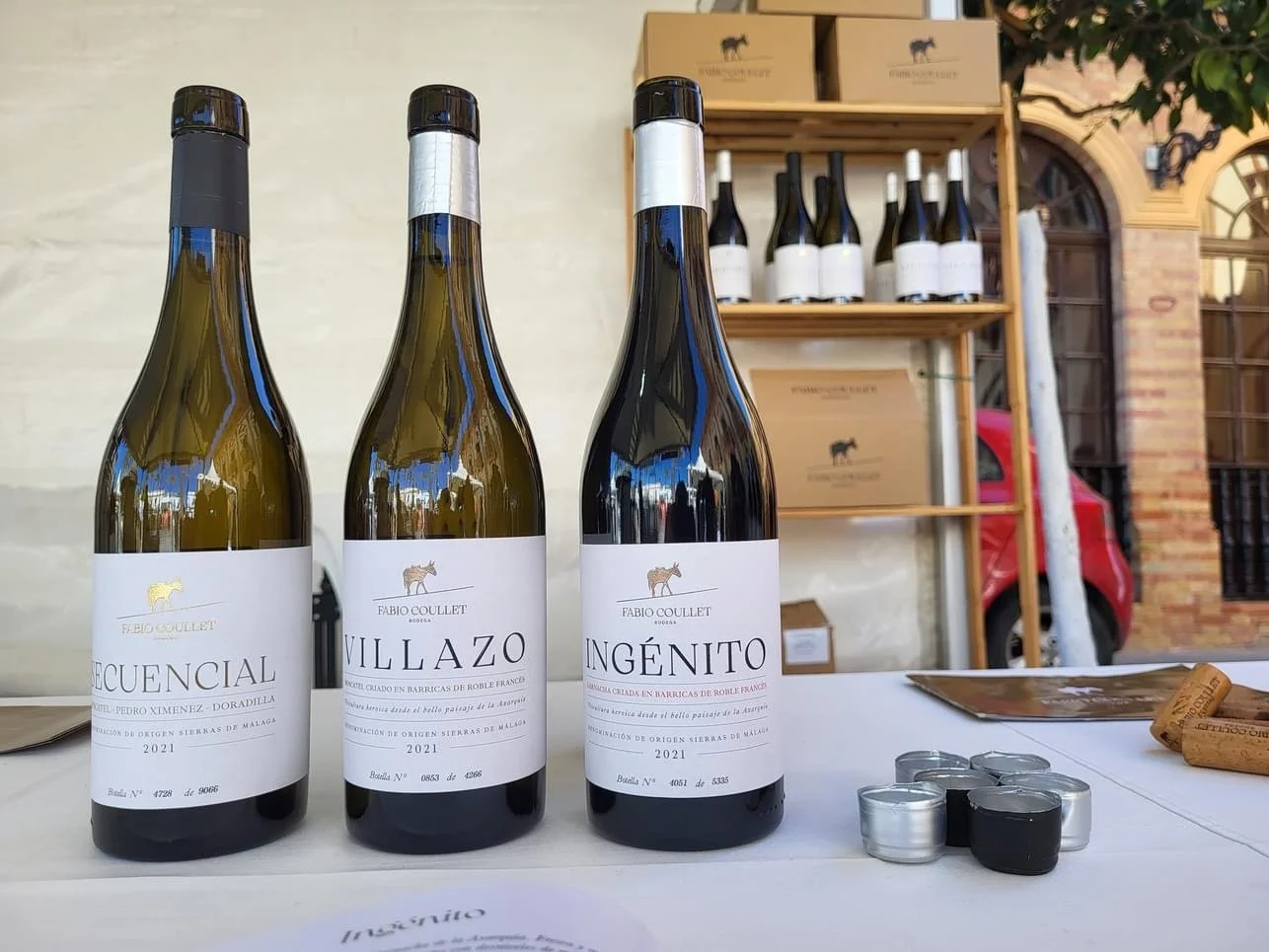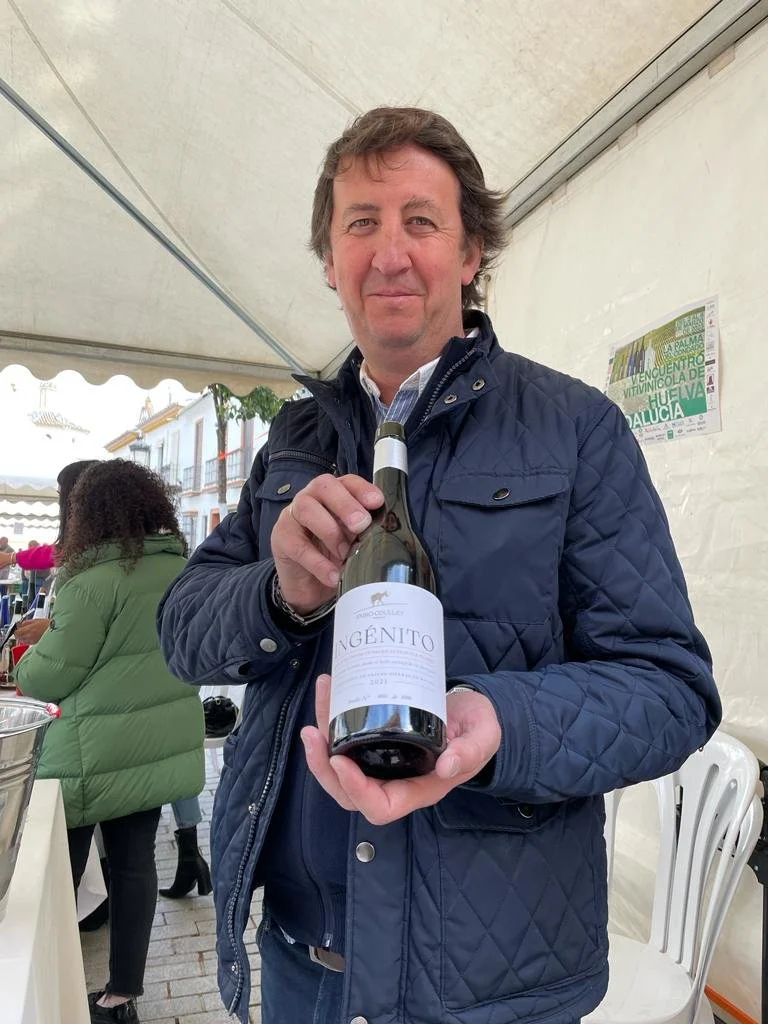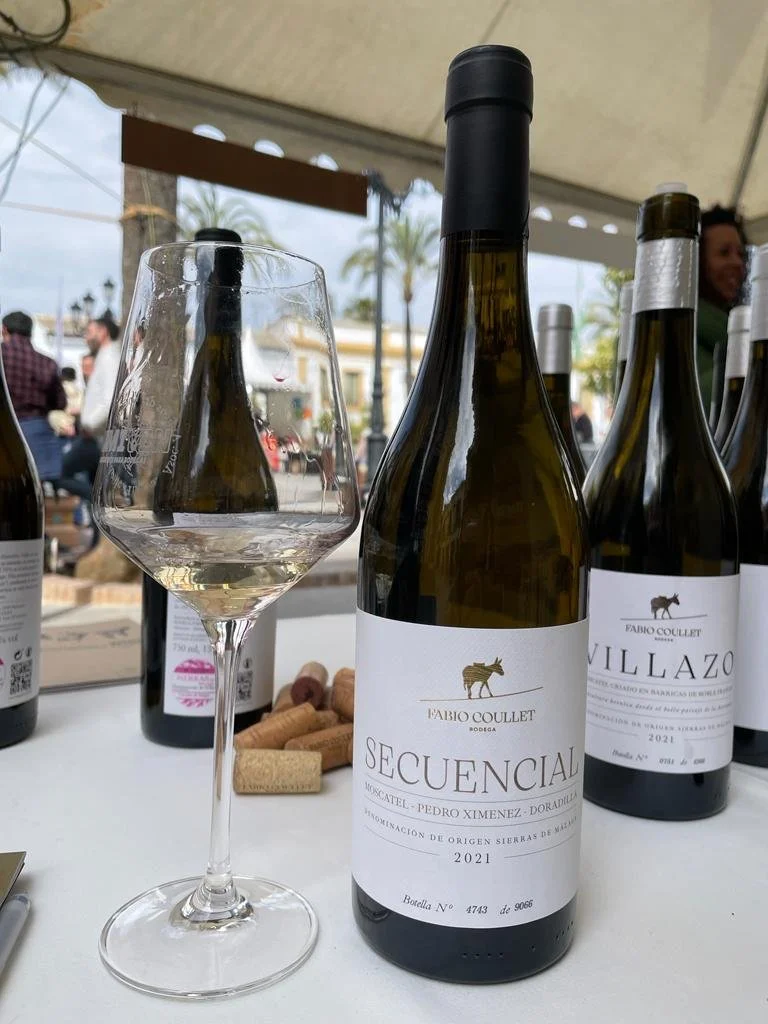The 2023 Encuentro Vitivinícola de Huelva in La Palma del Condado
Over four days in March the town of La Palma del Condado, in the province of Huelva, hosted the Encuentro Vitivinícola. This is an annual event organised by the Amigos del Vino del Condado de Huelva.
This was the fifth edition of this regional wine fair. We covered the IV Encuentro in 2022.
This year 14 bodegas and producers from different provinces of Andalucía were present, alongside local winemakers from the D.O. Condado de Huelva.
The winemakers set out their stands around the elegant Plaza de España, watched over by the beautiful parish church of San Juan Bautista.
Here are notes on some of the more interesting wines I encountered.
Colección Privada 2021 (13%), Bodegas Vega Menacho
Made with the local white grape variety Zalema, this is Juan Vega Menacho’s best wine that has been rebranded with a new label for the latest vintage. The fruit comes from bush vines growing at 140 metres in limestone soil rich in marine fossils. After a light pressing and gentle extraction, the mosto was fermented and then aged for 10 months in American oak barrels.
Light amber in colour reflecting some oxidation. The nose shows stone fruit, almond and herbs. On the palate it’s dry, mineral and balanced with good acidity and a persistent saline finish. Definitely one of the best examples of a Zalema with some ageing. Only 560 individually numbered bottles available.
La Divisa Cabernet Franc Limited Edition 2021 (14,5%), Bodegas La Divisa
Bodegas La Divisa, situated in the La Contraviesa-Alpujarra subzone of D.O. Granada, was founded in 2017 by two Argentinian entrepreneurs Alejandro Vignapiano and Juan Manuel Colome.
This 100% Cabernet Franc comes from certified organic vineyards located between 1,100 and 1,300 metres. No surprise then that the winemakers describe it as a “high altitude wine”. Curiously the grapes come from Cabernet Franc grafted onto much older Tempranillo vines.
Quite a powerful tinto with spicy black fruit and some earthiness. With tannins on the firm side, it’s a wine that will develop much more after some extended time in the bottle. Only 400 bottles were made.
Manzanilla La Cigerrera (15%), Bodegas La Cigarrera
A copita of this classic Sanlúcar manzanilla was a real palate sharpener. With five years of biological ageing in the criadera-solera system, it has a straw yellow colour and a pungent, briny aroma. Dry, savoury, intense, sharp and with extraordinary length. At between 7 and 8€, it’s unbeatable value for a wine of this quality.
Tartis (12%), Bodegas Magasé
Magasé is a new project by the Mañes Izquierdo family who are rebuilding an old winery in La Palma del Condado that dates from the beginning of the 20th century.
They harvest grapes from low-yielding 80-year-old Zalema vines in albariza soils. Their concept is to create wines that have authentic terroir expression. In the words of Joaquín Mañes Izquierdo: “Del campo a la botella - from the land to the bottle”.
The three wines on show were all from their first harvest. All of them showed an aromatic, herbal nose and superior acidity than most wines made from the Zalema variety.
Particularly interesting was the Tartis, a wine named after Tartessos, the ancient region and civilisation in south-west Spain. A 100% Zalema macerated with skins before being pressed, fermented and aged in clay amphora under a light veil of flor. It is light orange in colour, aromatic and quite complex, with a chalky mineral core and saline traces. This felt like a really authentic Zalema with the potential to express its origin and soul.
Three wines from Bodega Fabio Coullet
Argentinian agronomist Fabio Coullet directs this project in the La Axarquía region that is part of the D.O. Sierras de Málaga. He is committed to the principles of minimal intervention and sustainable viticulture.
The La Axarquía landscape is dominated by steep mountainsides which prevents the bodega from working with machinery. Mules take on some of the work in the vineyards and feature as an icon on the wine labels.
I tried all three of Fabio’s wines.
Ingénito (13%) is a 100% Garnacha from six small parcels in the village of Almáchar. The grapes are manually harvested and then screened to remove overripe berries to ensure a fresh expression. Ageing is in 500 litre used French oak barrels. This is a delicate, light-coloured wine with lovely purity and focus. The palate is fresh with crunchy red fruit and a clean mineral edge.
Villazo (13%) is a single variety Moscatel de Alejandría, made with the grapes from 80- to 90-year-old vines from a single parcel of the same name. The grapes are destemmed and fermented with wild yeasts at a low temperature, before ageing in new French oak. Aromatic and mineral with notes of white flowers and jasmine, and fat and slightly buttery on the palate.
Secuencial (13%), a blend of Moscatel de Alejandría, Doradilla and Pedro Ximénez, with each variety fermented separately. Very fresh with a citrus and floral nose, and good volume from its lees ageing. A fresh, balanced and very drinkable cuvée.









